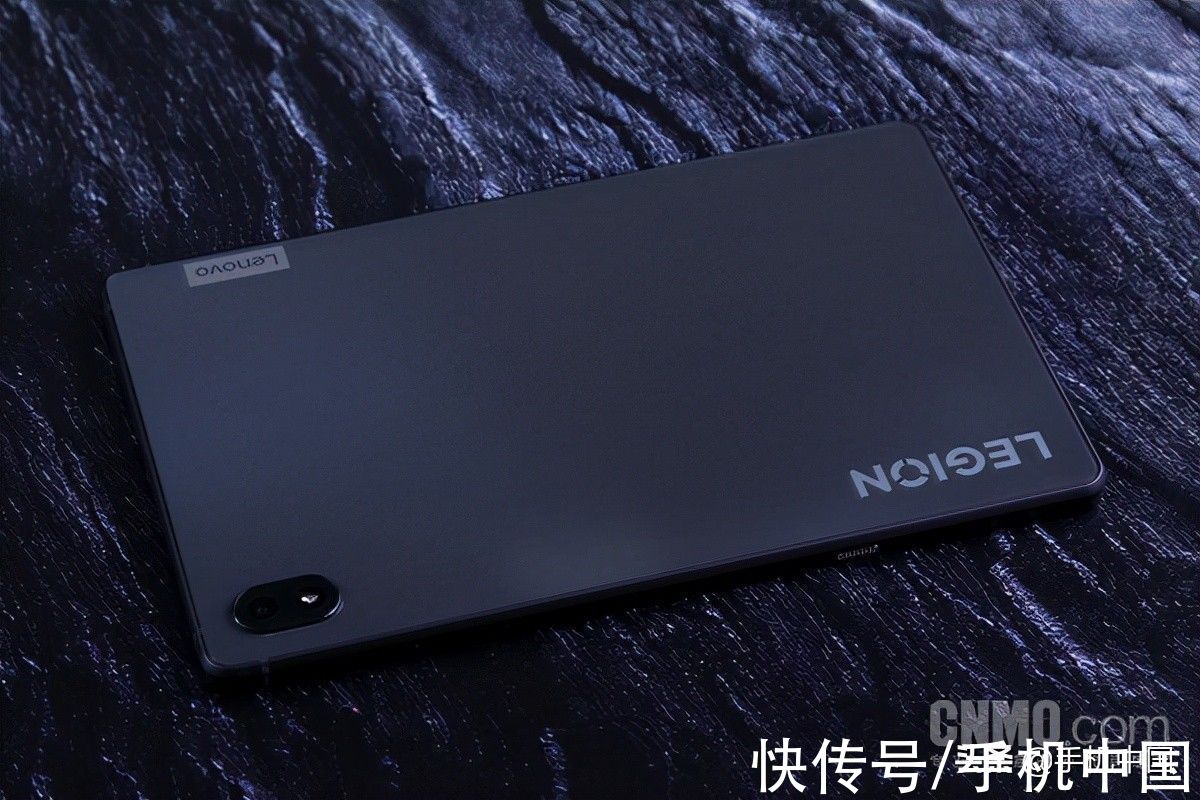Java|Java IO
Before
IO еҲҶдёәпјҡ
еҗҢжӯҘгҖҒејӮжӯҘ
йҳ»еЎһгҖҒйқһйҳ»еЎһ
еҗҢжӯҘе’ҢејӮжӯҘжҳҜзӣ®зҡ„пјҢйҳ»еЎһе’Ңйқһйҳ»еЎһжҳҜе®һзҺ°ж–№ејҸгҖӮ
дёҖдёӘIOж“ҚдҪңе…¶е®һеҲҶжҲҗдәҶдёӨдёӘжӯҘйӘӨпјҡеҸ‘иө·IOиҜ·жұӮе’Ңе®һйҷ…зҡ„IOж“ҚдҪңгҖӮIOж“ҚдҪңеҸҜд»ҘеҲҶдёә3зұ»пјҡеҗҢжӯҘйҳ»еЎһпјҲеҚіж—©жңҹзҡ„IOж“ҚдҪңпјүгҖҒеҗҢжӯҘйқһйҳ»еЎһпјҲNIOпјүгҖҒејӮжӯҘпјҲAIOпјү
еҗҢжӯҘIOе’ҢејӮжӯҘIOзҡ„еҢәеҲ«е°ұеңЁдәҺ第дәҢдёӘжӯҘйӘӨжҳҜеҗҰйҳ»еЎһпјҢеҰӮжһңе®һйҷ…зҡ„IOиҜ»еҶҷйҳ»еЎһиҜ·жұӮиҝӣзЁӢпјҢйӮЈд№Ҳе°ұжҳҜеҗҢжӯҘIOгҖӮ
йҳ»еЎһIOе’Ңйқһйҳ»еЎһIOзҡ„еҢәеҲ«еңЁдәҺ第дёҖжӯҘпјҢеҸ‘иө·IOиҜ·жұӮжҳҜеҗҰдјҡиў«йҳ»еЎһпјҢеҰӮжһңйҳ»еЎһзӣҙеҲ°е®ҢжҲҗйӮЈд№Ҳе°ұжҳҜдј з»ҹзҡ„йҳ»еЎһIOпјҢеҰӮжһңдёҚйҳ»еЎһпјҢйӮЈд№Ҳе°ұжҳҜйқһйҳ»еЎһIOгҖӮ
BIOгҖҒNIOгҖҒAIOйҖӮз”ЁеңәжҷҜеҲҶжһҗ:
- BIOж–№ејҸйҖӮз”ЁдәҺиҝһжҺҘж•°зӣ®жҜ”иҫғе°Ҹдё”еӣәе®ҡзҡ„жһ¶жһ„пјҢиҝҷз§Қж–№ејҸеҜ№жңҚеҠЎеҷЁиө„жәҗиҰҒжұӮжҜ”иҫғй«ҳпјҢ并еҸ‘еұҖйҷҗдәҺеә”з”ЁдёӯпјҢJDK1.4д»ҘеүҚзҡ„е”ҜдёҖйҖүжӢ©пјҢдҪҶзЁӢеәҸзӣҙи§Ӯз®ҖеҚ•жҳ“зҗҶи§ЈгҖӮ
- NIOж–№ејҸйҖӮз”ЁдәҺиҝһжҺҘж•°зӣ®еӨҡдё”иҝһжҺҘжҜ”иҫғзҹӯпјҲиҪ»ж“ҚдҪңпјүзҡ„жһ¶жһ„пјҢжҜ”еҰӮиҒҠеӨ©жңҚеҠЎеҷЁпјҢ并еҸ‘еұҖйҷҗдәҺеә”з”ЁдёӯпјҢзј–зЁӢжҜ”иҫғеӨҚжқӮпјҢJDK1.4ејҖе§Ӣж”ҜжҢҒгҖӮ
- AIOж–№ејҸдҪҝз”ЁдәҺиҝһжҺҘж•°зӣ®еӨҡдё”иҝһжҺҘжҜ”иҫғй•ҝпјҲйҮҚж“ҚдҪңпјүзҡ„жһ¶жһ„пјҢжҜ”еҰӮзӣёеҶҢжңҚеҠЎеҷЁпјҢе……еҲҶи°ғз”ЁOSеҸӮдёҺ并еҸ‘ж“ҚдҪңпјҢзј–зЁӢжҜ”иҫғеӨҚжқӮпјҢJDK7ејҖе§Ӣж”ҜжҢҒгҖӮ
Java I/Oдё»иҰҒеҢ…жӢ¬еҰӮдёӢеҮ дёӘеұӮж¬ЎпјҢеҢ…еҗ«дёүдёӘйғЁеҲҶпјҡ
1.жөҒејҸйғЁеҲҶ,IOзҡ„дё»дҪ“йғЁеҲҶпјӣ
2.йқһжөҒејҸйғЁеҲҶ,дё»иҰҒеҢ…еҗ«дёҖдәӣиҫ…еҠ©жөҒејҸйғЁеҲҶзҡ„зұ»пјҢеҰӮпјҡFileзұ»гҖҒRandomAccessFileзұ»е’ҢFileDescriptorзӯүзұ»пјӣ
3.е…¶д»–зұ»,ж–Ү件иҜ»еҸ–йғЁеҲҶзҡ„дёҺе®үе…Ёзӣёе…ізҡ„зұ»пјҢеҰӮпјҡSerializablePermissionзұ»пјҢд»ҘеҸҠдёҺжң¬ең°ж“ҚдҪңзі»з»ҹзӣёе…ізҡ„ж–Ү件系з»ҹзҡ„зұ»пјҢеҰӮпјҡFileSystemзұ»е’ҢWin32FileSystemзұ»е’ҢWinNTFileSystemзұ»гҖӮ
жөҒпјҡд»ЈиЎЁд»»дҪ•жңүиғҪеҠӣдә§еҮәж•°жҚ®зҡ„ж•°жҚ®жәҗеҜ№иұЎжҲ–иҖ…жҳҜжңүиғҪеҠӣжҺҘеҸ—ж•°жҚ®зҡ„жҺҘ收з«ҜеҜ№иұЎIOжөҒзҡ„еҲҶзұ»
- ж №жҚ®еӨ„зҗҶж•°жҚ®зұ»еһӢзҡ„дёҚеҗҢеҲҶдёәпјҡеӯ—з¬ҰжөҒе’Ңеӯ—иҠӮжөҒ
- ж №жҚ®ж•°жҚ®жөҒеҗ‘дёҚеҗҢеҲҶдёәпјҡиҫ“е…ҘжөҒе’Ңиҫ“еҮәжөҒ
- жҢүж•°жҚ®жқҘжәҗпјҲеҺ»еҗ‘пјүеҲҶзұ»пјҡ
1гҖҒFileпјҲж–Ү件пјүпјҡ FileInputStream, FileOutputStream, FileReader, FileWriter
2гҖҒbyte[]пјҡByteArrayInputStream, ByteArrayOutputStream
3гҖҒChar[]: CharArrayReader,CharArrayWriter
4гҖҒString:StringBufferInputStream, StringReader, StringWriter
5гҖҒзҪ‘з»ңж•°жҚ®жөҒпјҡInputStream,OutputStream, Reader, Writer
- еӯ—иҠӮжөҒпјҡж•°жҚ®жөҒдёӯжңҖе°Ҹзҡ„ж•°жҚ®еҚ•е…ғжҳҜеӯ—иҠӮ
- еӯ—з¬ҰжөҒпјҡж•°жҚ®жөҒдёӯжңҖе°Ҹзҡ„ж•°жҚ®еҚ•е…ғжҳҜеӯ—з¬ҰпјҢ Javaдёӯзҡ„еӯ—з¬ҰжҳҜUnicodeзј–з ҒпјҢдёҖдёӘеӯ—з¬ҰеҚ з”ЁдёӨдёӘеӯ—иҠӮгҖӮ
NIO http://www.iteye.com/magazines/132-Java-NIO
дёүдёӘе…ій”®з»„жҲҗпјҡ
Buffer
Channel
Selector
ж·ұе…Ҙжө…еҮәNIOд№ӢChannelгҖҒBuffer
https://www.jianshu.com/p/052035037297
Buffer
дёҖеқ—зј“еӯҳеҢәпјҢеҶ…йғЁдҪҝз”Ёеӯ—иҠӮж•°з»„еӯҳеӮЁж•°жҚ®пјҢ并з»ҙжҠӨеҮ дёӘзү№ж®ҠеҸҳйҮҸпјҢе®һзҺ°ж•°жҚ®зҡ„еҸҚеӨҚеҲ©з”ЁгҖӮ
1гҖҒmarkпјҡеҲқе§ӢеҖјдёә-1пјҢз”ЁдәҺеӨҮд»ҪеҪ“еүҚзҡ„position;
2гҖҒpositionпјҡеҲқе§ӢеҖјдёә0пјҢpositionиЎЁзӨәеҪ“еүҚеҸҜд»ҘеҶҷе…ҘжҲ–иҜ»еҸ–ж•°жҚ®зҡ„дҪҚзҪ®пјҢеҪ“еҶҷе…ҘжҲ–иҜ»еҸ–дёҖдёӘж•°жҚ®еҗҺпјҢpositionеҗ‘еүҚ移еҠЁеҲ°дёӢдёҖдёӘдҪҚзҪ®пјӣ
3гҖҒlimitпјҡеҶҷжЁЎејҸдёӢпјҢlimitиЎЁзӨәжңҖеӨҡиғҪеҫҖBufferйҮҢеҶҷеӨҡе°‘ж•°жҚ®пјҢзӯүдәҺcapacityеҖјпјӣиҜ»жЁЎејҸдёӢпјҢlimitиЎЁзӨәжңҖеӨҡеҸҜд»ҘиҜ»еҸ–еӨҡе°‘ж•°жҚ®гҖӮ
4гҖҒcapacityпјҡзј“еӯҳж•°з»„еӨ§е°Ҹ

ж–Үз« еӣҫзүҮ
ByteBufferзҡ„е®һзҺ°зұ»еҢ…жӢ¬"HeapByteBuffer"е’Ң"DirectByteBuffer"дёӨз§ҚгҖӮ
- HeapByteBufferйҖҡиҝҮеҲқе§ӢеҢ–еӯ—иҠӮж•°з»„hdпјҢеңЁиҷҡжӢҹжңәе ҶдёҠз”іиҜ·еҶ…еӯҳз©әй—ҙгҖӮ
- DirectByteBufferйҖҡиҝҮunsafe.allocateMemoryз”іиҜ·е ҶеӨ–еҶ…еӯҳпјҢ并еңЁByteBufferзҡ„addressеҸҳйҮҸдёӯз»ҙжҠӨжҢҮеҗ‘иҜҘеҶ…еӯҳзҡ„ең°еқҖгҖӮ
unsafe.setMemory(base, size, (byte) 0)ж–№жі•жҠҠж–°з”іиҜ·зҡ„еҶ…еӯҳж•°жҚ®жё…йӣ¶гҖӮ
NIOжҠҠе®ғж”ҜжҢҒзҡ„I/OеҜ№иұЎжҠҪиұЎдёәChannelпјҢChannelеҸҲз§°вҖңйҖҡйҒ“вҖқпјҢзұ»дјјдәҺеҺҹI/Oдёӯзҡ„жөҒпјҲStreamпјүпјҢдҪҶжңүжүҖеҢәеҲ«пјҡ
1гҖҒжөҒжҳҜеҚ•еҗ‘зҡ„пјҢйҖҡйҒ“жҳҜеҸҢеҗ‘зҡ„пјҢеҸҜиҜ»еҸҜеҶҷгҖӮ
2гҖҒжөҒиҜ»еҶҷжҳҜйҳ»еЎһзҡ„пјҢйҖҡйҒ“еҸҜд»ҘејӮжӯҘиҜ»еҶҷгҖӮ
3гҖҒжөҒдёӯзҡ„ж•°жҚ®еҸҜд»ҘйҖүжӢ©жҖ§зҡ„е…ҲиҜ»еҲ°зј“еӯҳдёӯпјҢйҖҡйҒ“зҡ„ж•°жҚ®жҖ»жҳҜиҰҒе…ҲиҜ»еҲ°дёҖдёӘзј“еӯҳдёӯпјҢжҲ–д»Һзј“еӯҳдёӯеҶҷе…Ҙ

ж–Үз« еӣҫзүҮ
зӣ®еүҚе·ІзҹҘChannelзҡ„е®һзҺ°зұ»жңүпјҡ
- FileChannel
- DatagramChannel
- SocketChannel
- ServerSocketChannel
йҖҡиҝҮдёҠиҝ°е®һзҺ°еҸҜд»ҘзңӢеҮәпјҢеҹәдәҺchannelзҡ„ж–Ү件数жҚ®иҜ»еҸ–жӯҘйӘӨеҰӮдёӢпјҡ
1гҖҒз”іиҜ·дёҖеқ—е’Ңзј“еӯҳеҗҢеӨ§е°Ҹзҡ„DirectByteBuffer bbгҖӮ
2гҖҒиҜ»еҸ–ж•°жҚ®еҲ°зј“еӯҳbbпјҢеә•еұӮз”ұNativeDispatcherзҡ„readе®һзҺ°гҖӮ
3гҖҒжҠҠbbзҡ„ж•°жҚ®иҜ»еҸ–еҲ°dstпјҲз”ЁжҲ·е®ҡд№үзҡ„зј“еӯҳпјҢеңЁjvmдёӯеҲҶй…ҚеҶ…еӯҳпјүгҖӮ
readж–№жі•еҜјиҮҙж•°жҚ®еӨҚеҲ¶дәҶдёӨж¬ЎгҖӮ
йҖҡиҝҮдёҠиҝ°е®һзҺ°еҸҜд»ҘзңӢеҮәпјҢеҹәдәҺchannelзҡ„ж–Ү件数жҚ®еҶҷе…ҘжӯҘйӘӨеҰӮдёӢпјҡ
1гҖҒз”іиҜ·дёҖеқ—DirectByteBufferпјҢbbеӨ§е°ҸдёәbyteBufferдёӯзҡ„limit - positionгҖӮ
2гҖҒеӨҚеҲ¶byteBufferдёӯзҡ„ж•°жҚ®еҲ°bbдёӯгҖӮ
3гҖҒжҠҠж•°жҚ®д»ҺbbдёӯеҶҷе…ҘеҲ°ж–Ү件пјҢеә•еұӮз”ұNativeDispatcherзҡ„writeе®һзҺ°
writeж–№жі•д№ҹеҜјиҮҙдәҶж•°жҚ®еӨҚеҲ¶дәҶдёӨж¬Ў
File file = new RandomAccessFile("data.txt", "rw");
FileChannel channel = file.getChannel();
ByteBuffer buffer = ByteBuffer.allocate(48);
int bytesRead = channel.read(buffer);
while (bytesRead != -1) {
System.out.println("Read " + bytesRead);
buffer.flip();
while(buffer.hasRemaining()){
System.out.print((char) buffer.get());
}
buffer.clear();
bytesRead = channel.read(buffer);
}
file.close();
жіЁж„Ҹbuffer.flip() зҡ„и°ғз”ЁпјҢйҰ–е…Ҳе°Ҷж•°жҚ®еҶҷе…ҘеҲ°bufferпјҢ然еҗҺеҸҳжҲҗиҜ»жЁЎејҸпјҢеҶҚд»ҺbufferдёӯиҜ»еҸ–ж•°жҚ®гҖӮSelector
ж·ұе…Ҙжө…еҮәNIOд№ӢSelectorе®һзҺ°еҺҹзҗҶ
https://www.jianshu.com/p/0d497fe5484a

ж–Үз« еӣҫзүҮ
дёәдәҶе®һзҺ° Selector з®ЎзҗҶеӨҡдёӘ SocketChannelпјҢеҝ…йЎ»е°Ҷе…·дҪ“зҡ„ SocketChannel еҜ№иұЎжіЁеҶҢеҲ° SelectorпјҢ并声жҳҺйңҖиҰҒзӣ‘еҗ¬зҡ„дәӢ件пјҲиҝҷж · Selector жүҚзҹҘйҒ“йңҖиҰҒи®°еҪ•д»Җд№Ҳж•°жҚ®пјүпјҢдёҖе…ұжңү4з§ҚдәӢ件пјҡ
1гҖҒconnectпјҡе®ўжҲ·з«ҜиҝһжҺҘжңҚеҠЎз«ҜдәӢ件пјҢеҜ№еә”еҖјдёәSelectionKey.OP_CONNECT(8)
2гҖҒacceptпјҡжңҚеҠЎз«ҜжҺҘ收客жҲ·з«ҜиҝһжҺҘдәӢ件пјҢеҜ№еә”еҖјдёәSelectionKey.OP_ACCEPT(16)
3гҖҒreadпјҡиҜ»дәӢ件пјҢеҜ№еә”еҖјдёәSelectionKey.OP_READ(1)
4гҖҒwriteпјҡеҶҷдәӢ件пјҢеҜ№еә”еҖјдёәSelectionKey.OP_WRITE(4)
иҝҷдёӘеҫҲеҘҪзҗҶи§ЈпјҢжҜҸж¬ЎиҜ·жұӮеҲ°иҫҫжңҚеҠЎеҷЁпјҢйғҪжҳҜд»ҺconnectејҖе§ӢпјҢconnectжҲҗеҠҹеҗҺпјҢжңҚеҠЎз«ҜејҖе§ӢеҮҶеӨҮacceptпјҢеҮҶеӨҮе°ұз»ӘпјҢејҖе§ӢиҜ»ж•°жҚ®пјҢ并еӨ„зҗҶпјҢжңҖеҗҺеҶҷеӣһж•°жҚ®иҝ”еӣһгҖӮ
жүҖд»ҘпјҢеҪ“SocketChannelжңүеҜ№еә”зҡ„дәӢ件еҸ‘з”ҹж—¶пјҢSelectorйғҪеҸҜд»Ҙи§ӮеҜҹеҲ°пјҢ并иҝӣиЎҢзӣёеә”зҡ„еӨ„зҗҶгҖӮ
гҖҗJava|Java IOгҖ‘SocketChannelгҖҒServerSocketChannel е’Ң Selector зҡ„е®һдҫӢеҲқе§ӢеҢ–йғҪйҖҡиҝҮ SelectorProvider зұ»е®һзҺ°пјҢе…¶дёӯ Selector жҳҜж•ҙдёӘ NIO Socket зҡ„ж ёеҝғе®һзҺ°гҖӮ
е®һдҫӢ жңҚеҠЎз«Ҝ
public class NIOServer {/*жҺҘеҸ—ж•°жҚ®зј“еҶІеҢә*/
private ByteBuffer sendbuffer = ByteBuffer.allocate(1024);
/*еҸ‘йҖҒж•°жҚ®зј“еҶІеҢә*/
privateByteBuffer receivebuffer = ByteBuffer.allocate(1024);
private Selector selector;
public NIOServer(int port) throws IOException {
// жү“ејҖжңҚеҠЎеҷЁеҘ—жҺҘеӯ—йҖҡйҒ“
ServerSocketChannel serverSocketChannel = ServerSocketChannel.open();
// жңҚеҠЎеҷЁй…ҚзҪ®дёәйқһйҳ»еЎһ
serverSocketChannel.configureBlocking(false);
// жЈҖзҙўдёҺжӯӨйҖҡйҒ“е…іиҒ”зҡ„жңҚеҠЎеҷЁеҘ—жҺҘеӯ—
ServerSocket serverSocket = serverSocketChannel.socket();
// иҝӣиЎҢжңҚеҠЎзҡ„з»‘е®ҡ
serverSocket.bind(new InetSocketAddress(port));
// йҖҡиҝҮopen()ж–№жі•жүҫеҲ°Selector
selector = Selector.open();
// жіЁеҶҢеҲ°selectorпјҢзӯүеҫ…иҝһжҺҘ
serverSocketChannel.register(selector, SelectionKey.OP_ACCEPT);
System.out.println("Server Start----:");
}//
private void listen() throws IOException {
while (true) {
selector.select();
Set selectionKeys = selector.selectedKeys();
Iterator iterator = selectionKeys.iterator();
while (iterator.hasNext()) {
SelectionKey selectionKey = iterator.next();
iterator.remove();
handleKey(selectionKey);
}
}
}private void handleKey(SelectionKey selectionKey) throws IOException {
// жҺҘеҸ—иҜ·жұӮ
ServerSocketChannel server = null;
SocketChannel client = null;
String receiveText;
String sendText;
int count=0;
// жөӢиҜ•жӯӨй”®зҡ„йҖҡйҒ“жҳҜеҗҰе·ІеҮҶеӨҮеҘҪжҺҘеҸ—ж–°зҡ„еҘ—жҺҘеӯ—иҝһжҺҘгҖӮ
if (selectionKey.isAcceptable()) {
// иҝ”еӣһдёәд№ӢеҲӣе»әжӯӨй”®зҡ„йҖҡйҒ“гҖӮ
server = (ServerSocketChannel) selectionKey.channel();
// жҺҘеҸ—еҲ°жӯӨйҖҡйҒ“еҘ—жҺҘеӯ—зҡ„иҝһжҺҘгҖӮ
// жӯӨж–№жі•иҝ”еӣһзҡ„еҘ—жҺҘеӯ—йҖҡйҒ“пјҲеҰӮжһңжңүпјүе°ҶеӨ„дәҺйҳ»еЎһжЁЎејҸгҖӮ
client = server.accept();
// й…ҚзҪ®дёәйқһйҳ»еЎһ
client.configureBlocking(false);
// жіЁеҶҢеҲ°selectorпјҢзӯүеҫ…иҝһжҺҘ
client.register(selector, SelectionKey.OP_READ);
} else if (selectionKey.isReadable()) {
// иҝ”еӣһдёәд№ӢеҲӣе»әжӯӨй”®зҡ„йҖҡйҒ“гҖӮ
client = (SocketChannel) selectionKey.channel();
//е°Ҷзј“еҶІеҢәжё…з©әд»ҘеӨҮдёӢж¬ЎиҜ»еҸ–
receivebuffer.clear();
//иҜ»еҸ–жңҚеҠЎеҷЁеҸ‘йҖҒжқҘзҡ„ж•°жҚ®еҲ°зј“еҶІеҢәдёӯ
count = client.read(receivebuffer);
if (count > 0) {
receiveText = new String( receivebuffer.array(),0,count);
System.out.println("жңҚеҠЎеҷЁз«ҜжҺҘеҸ—е®ўжҲ·з«Ҝж•°жҚ®--:"+receiveText);
client.register(selector, SelectionKey.OP_WRITE);
}
} else if (selectionKey.isWritable()) {
//е°Ҷзј“еҶІеҢәжё…з©әд»ҘеӨҮдёӢж¬ЎеҶҷе…Ҙ
sendbuffer.clear();
// иҝ”еӣһдёәд№ӢеҲӣе»әжӯӨй”®зҡ„йҖҡйҒ“гҖӮ
client = (SocketChannel) selectionKey.channel();
sendText="message from server--";
//еҗ‘зј“еҶІеҢәдёӯиҫ“е…Ҙж•°жҚ®
sendbuffer.put(sendText.getBytes());
//е°Ҷзј“еҶІеҢәеҗ„ж Үеҝ—еӨҚдҪҚ,еӣ дёәеҗ‘йҮҢйқўputдәҶж•°жҚ®ж Үеҝ—иў«ж”№еҸҳиҰҒжғід»ҺдёӯиҜ»еҸ–ж•°жҚ®еҸ‘еҗ‘жңҚеҠЎеҷЁ,е°ұиҰҒеӨҚдҪҚ
sendbuffer.flip();
//иҫ“еҮәеҲ°йҖҡйҒ“
client.write(sendbuffer);
System.out.println("жңҚеҠЎеҷЁз«Ҝеҗ‘е®ўжҲ·з«ҜеҸ‘йҖҒж•°жҚ®--пјҡ"+sendText);
client.register(selector, SelectionKey.OP_READ);
}
}/**
* @param args
* @throws IOException
*/
public static void main(String[] args) throws IOException {
int port = 8080;
NIOServer server = new NIOServer(port);
server.listen();
}
}
е®ўжҲ·з«Ҝ
public class NIOClient {
/*жҺҘеҸ—ж•°жҚ®зј“еҶІеҢә*/
private static ByteBuffer sendbuffer = ByteBuffer.allocate(1024);
/*еҸ‘йҖҒж•°жҚ®зј“еҶІеҢә*/
private static ByteBuffer receivebuffer = ByteBuffer.allocate(1024);
public static void main(String[] args) throws IOException {
// жү“ејҖsocketйҖҡйҒ“
SocketChannel socketChannel = SocketChannel.open();
// и®ҫзҪ®дёәйқһйҳ»еЎһж–№ејҸ
socketChannel.configureBlocking(false);
// жү“ејҖйҖүжӢ©еҷЁ
Selector selector = Selector.open();
// жіЁеҶҢиҝһжҺҘжңҚеҠЎз«ҜsocketеҠЁдҪң
socketChannel.register(selector, SelectionKey.OP_CONNECT);
// иҝһжҺҘ
socketChannel.connect(new InetSocketAddress("127.0.0.1", 8080));
Set selectionKeys;
Iterator iterator;
SelectionKey selectionKey;
SocketChannel client;
String receiveText;
String sendText;
int count=0;
while (true) {
//йҖүжӢ©дёҖз»„й”®пјҢе…¶зӣёеә”зҡ„йҖҡйҒ“е·Ідёә I/O ж“ҚдҪңеҮҶеӨҮе°ұз»ӘгҖӮ
//жӯӨж–№жі•жү§иЎҢеӨ„дәҺйҳ»еЎһжЁЎејҸзҡ„йҖүжӢ©ж“ҚдҪңгҖӮ
selector.select();
//иҝ”еӣһжӯӨйҖүжӢ©еҷЁзҡ„е·ІйҖүжӢ©й”®йӣҶгҖӮ
selectionKeys = selector.selectedKeys();
//System.out.println(selectionKeys.size());
iterator = selectionKeys.iterator();
while (iterator.hasNext()) {
selectionKey = iterator.next();
if (selectionKey.isConnectable()) {
System.out.println("client connect");
client = (SocketChannel) selectionKey.channel();
// еҲӨж–ӯжӯӨйҖҡйҒ“дёҠжҳҜеҗҰжӯЈеңЁиҝӣиЎҢиҝһжҺҘж“ҚдҪңгҖӮ
// е®ҢжҲҗеҘ—жҺҘеӯ—йҖҡйҒ“зҡ„иҝһжҺҘиҝҮзЁӢгҖӮ
if (client.isConnectionPending()) {
client.finishConnect();
System.out.println("е®ҢжҲҗиҝһжҺҘ!");
sendbuffer.clear();
sendbuffer.put("Hello,Server".getBytes());
sendbuffer.flip();
client.write(sendbuffer);
}
client.register(selector, SelectionKey.OP_READ);
} else if (selectionKey.isReadable()) {
client = (SocketChannel) selectionKey.channel();
//е°Ҷзј“еҶІеҢәжё…з©әд»ҘеӨҮдёӢж¬ЎиҜ»еҸ–
receivebuffer.clear();
//иҜ»еҸ–жңҚеҠЎеҷЁеҸ‘йҖҒжқҘзҡ„ж•°жҚ®еҲ°зј“еҶІеҢәдёӯ
count=client.read(receivebuffer);
if(count>0){
receiveText = new String( receivebuffer.array(),0,count);
System.out.println("е®ўжҲ·з«ҜжҺҘеҸ—жңҚеҠЎеҷЁз«Ҝж•°жҚ®--:"+receiveText);
client.register(selector, SelectionKey.OP_WRITE);
}} else if (selectionKey.isWritable()) {
sendbuffer.clear();
client = (SocketChannel) selectionKey.channel();
sendText = "message from client--";
sendbuffer.put(sendText.getBytes());
//е°Ҷзј“еҶІеҢәеҗ„ж Үеҝ—еӨҚдҪҚ,еӣ дёәеҗ‘йҮҢйқўputдәҶж•°жҚ®ж Үеҝ—иў«ж”№еҸҳиҰҒжғід»ҺдёӯиҜ»еҸ–ж•°жҚ®еҸ‘еҗ‘жңҚеҠЎеҷЁ,е°ұиҰҒеӨҚдҪҚ
sendbuffer.flip();
client.write(sendbuffer);
System.out.println("е®ўжҲ·з«Ҝеҗ‘жңҚеҠЎеҷЁз«ҜеҸ‘йҖҒж•°жҚ®--пјҡ"+sendText);
client.register(selector, SelectionKey.OP_READ);
}
}
selectionKeys.clear();
}
}
}
жҺЁиҚҗйҳ…иҜ»
- JAVAпјҲжҠҪиұЎзұ»дёҺжҺҘеҸЈзҡ„еҢәеҲ«&йҮҚиҪҪдёҺйҮҚеҶҷ&еҶ…еӯҳжі„жјҸпјү
- дәӢ件代зҗҶ
- Java|Java OpenCVеӣҫеғҸеӨ„зҗҶд№ӢSIFTи§’зӮ№жЈҖжөӢиҜҰи§Ј
- javaдёӯеҰӮдҪ•е®һзҺ°йҮҚе»әдәҢеҸүж ‘
- ж•°з»„еёёз”Ёж–№жі•дёҖ
- гҖҗHadoopиё©йӣ·гҖ‘MacдёӢе®үиЈ…Hadoop3д»ҘеҸҠJavaзүҲжң¬й—®йўҳ
- Java|JavaеҹәзЎҖвҖ”вҖ”ж•°з»„
- RxJava|RxJava еңЁAndroidйЎ№зӣ®дёӯзҡ„дҪҝз”ЁпјҲдёҖпјү
- javaд№ӢstaticгҖҒstatic|javaд№ӢstaticгҖҒstatic finalгҖҒfinalзҡ„еҢәеҲ«дёҺеә”з”Ё
- JavaеҹәзЎҖ-й«ҳзә§зү№жҖ§-жһҡдёҫе®һзҺ°зҠ¶жҖҒжңә












